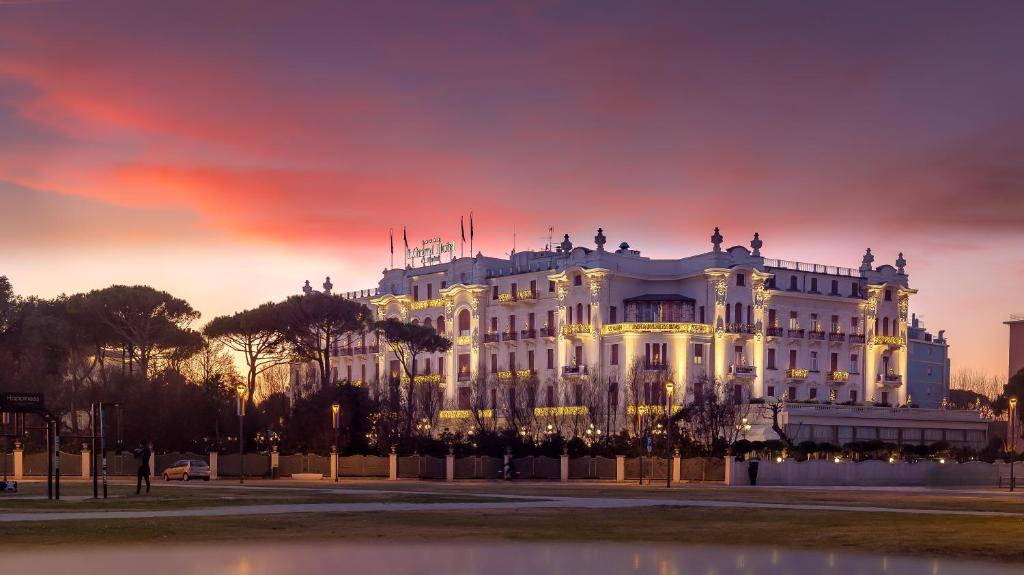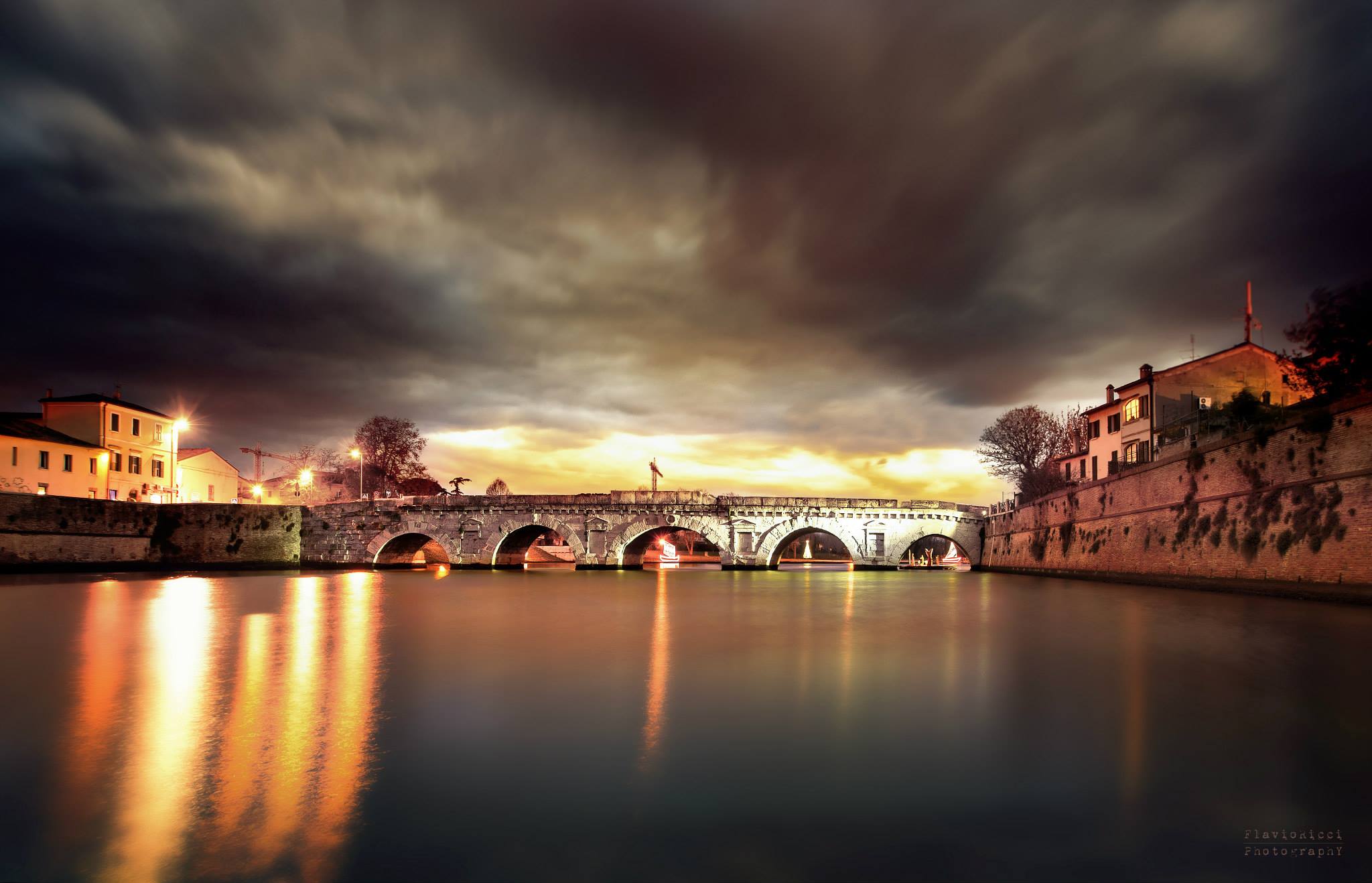
A Love Story at the Origins
I take you to Rome, on a warm evening in 1919.
Two windows face each other in a building in the city center.
The scent of jasmine fills the air as two young people exchange furtive glances.
He is Urbano Fellini, an enterprising merchant from Gambettola.
She is Ida Barbiani, the beautiful daughter of one of the most important industrialists in Rome.
Their love blooms between those balconies, nourished by glances and small gestures.
But Ida’s father cannot accept that his daughter marries a “provincial.”
For him, the egg merchant Urbano is not worthy of his family.
And this is where the story takes an unexpected turn.
The two lovers decide to defy fate. One night, like in one of the films their future son will direct, they flee from Rome.
Their first stop is Gambettola, at the house of the paternal grandparents.
But it is Rimini that calls them.
Here, in a modest house on Via Dardanelli 60, Federico Fellini is born on January 20, 1920.
And now let me reveal something magical.
That popular house, which no longer exists today, was located only 100 meters from the majestic Grand Hotel.
The same hotel that will become the symbol of the most dazzling dreams in Federico’s films.
As if fate had already written the screenplay of his life.
Fortune favors the bold, they say.
And Urbano proves it.
His business prospers quickly in Rimini.
So much so that soon the family moves to the prestigious Palazzo Ripa, on Corso d’Augusto.
It is a significant social leap, but above all, it is the first stage of Federico’s dreams.
That building hides incredible stories.
In its courtyard, a child begins to build his fantastic world.
A world populated by extraordinary characters that you will soon meet: the nuns with their white bonnets from the Via Bonsi kindergarten, a mysterious dwarf nun who seems to have stepped out of a fairy tale, and many other characters that will become immortal in cinema.
But before I take you to that enchanted courtyard, let me tell you what happens when little Federico crosses the gate of the San Vincenzo sisters’ kindergarten for the first time.
This is where the magic truly begins…
First Steps into the World of Fantasy
Imagine you are a six-year-old child crossing the gate of the Via Bonsi kindergarten.
This is where little Federico meets the San Vincenzo nuns for the first time, with their huge white hats that look like seagull wings in flight.
But there is one nun in particular who captures his attention.
She is small, so small that behind the desk, only her bonnet floats like a white island.
They call her “the dwarf nun,” and she will become the first immortal character in his creative universe.
Years later, in Amarcord, she will be the only one capable of getting the crazy uncle down from the tree with a simple sentence in Romagna dialect.
Now let’s go back to the courtyard of Palazzo Ripa.
Federico spends hours observing life go by: a lady singing at the window, playing with his brother, shadows dancing on the walls at sunset.
Every detail imprints in his memory like on a film reel.
It is his mother, Ida, who first notices this ability to transform reality into fantasy.
While other mothers of the time repress their children’s imagination, she does something revolutionary: she buys him colored pencils and blank sheets of paper.
She gives him the Corriere dei Piccoli, which Federico devours eagerly.
And when the little one begins to build puppet theaters, she is his first enthusiastic audience.
In the silence of his room, Federico brings fantastic worlds to life.
He draws tirelessly, invents stories, makes his puppets talk.
Everyday reality is transformed through his eyes into something magical and surreal.
But fate has two encounters in store for him that will change his life forever.
The first will happen at the Teatro Politeama, where a mysterious puppeteer named Jambo is about to raise the curtain.
The second, in a dark room at the Cinema Fulgor, where the flames of hell are about to light up on the screen…
Do you want to discover what happened on those two memorable days? It’s a story that will leave you breathless.
The Two Strikes of Lightning

There are moments that forever change the life of an artist.
For young Federico, these moments came in two magical places in Rimini in the 1920s: the Politeama Theatre and the Fulgor Cinema.
The Politeama was a popular theater right behind his house, a monumental building whose name promised “many shows.”
One day, while the Fellini family was moving into their new home, an extraordinary character arrived in the city: Jambo, born Enrico Novelli, son of the famous actor Ermete.
Jambo was not just a puppeteer.
He was a renowned illustrator, a storyteller of fantastic tales, a creator of impossible worlds.
Federico secretly sneaked into the theater to watch his performances.
Those animated figures, those vivid colors, those fantastic stories were forever etched in his creative memory.
But the true revelation, the one he himself would call “the spark of everything,” happened at the Fulgor Cinema.
Federico was only six years old when his father took him to see Maciste in Hell.
The chronicles of the time advised against showing the film to children, considering it too frightening.
Sitting on his father’s lap, instead of being terrified, little Federico was mesmerized.
The smoke rising from hell, the devils hopping on the screen, the flames dancing in the dark…
In that moment, cinema became his way of seeing the world.
At home, this passion transformed into pure creativity.
He devoured his beloved Pinocchio, collected every issue of Corriere dei Piccoli.
He built increasingly elaborate puppet theaters, staging performances for his friends in the neighborhood.
His drawings began to tell stories, capture characters, and bring to life a world of his own.
But life had an important challenge in store for Federico: the Liceo Classico Giulio Cesare.

I take you to Rimini in the 1930s, to the majestic Liceo Classico Giulio Cesare.
Here, among the austere corridors and silent classrooms, young Federico begins his school journey with surprisingly good results: an average of seven that sets him apart in a large class, which will eventually halve over the years.
But Federico’s story at school is a downward spiral, not due to a lack of intelligence, but because of that creative streak that increasingly takes over.
While the professors explain, his pencil sketches caricatures in his notebooks.
The time dedicated to drawing increases, while that spent studying decreases.
There is one episode that still makes Rimini locals smile today.
During a lesson, an exasperated professor orders him: “Fellini, take the door and leave!”
And Federico, with his theatrical irony, pretends to actually rip the door off its hinges.
But it is the episode with the military culture essay that definitively marks his school journey.
The professor, a staunch fascist, assigns an essay on the “duties of a centurion leader.”
Federico submits his paper after just thirty seconds.
He has written only: “I do not know the duties of a centurion leader. Please refer to my desk neighbor, who is also my centurion leader.”
The result? He is failed and required to retake the exam in October for military culture.
The pranks he pulls outside of school he re-enacts in class, which inevitably reflects on his behavior.
His classmates admire him for the courage and creativity that make him unique, while the professors see him as a destabilizing element.
But in this Rimini of the 1930s, suffocated by conformity and military discipline, Federico finds an escape: art.
At just 17 years old, along with his friend Demos Bonini, he opens his first art studio in front of the Tempio Malatestiano: the FEBO.
It is here that he begins to develop his artistic talent, drawing posters for the Cinema Fulgor and trying, with little success, to sell caricatures to tourists on the beach.
The FEBO will turn out to be a commercial failure, but it represents Federico’s first step toward the artistic career that will make him immortal.

It’s 1937, and on the facade of a small venue right in front of the Tempio Malatestiano, an ambitious sign appears: “FEBO.”
It’s the first art studio of seventeen-year-old Federico Fellini, opened together with his friend Demos Bonini.
The name is no coincidence: Febo, the god of the sun and the arts, seems to already foreshadow the bright future of the young artist.
In that small space, Federico begins to shape his dreams.
While Demos paints his works, Federico specializes in caricatures.
He spends his mornings at high school, drawing his teachers on the margins of his notebooks.
The afternoons are dedicated to his true passion: drawing.
Summer brings the first professional opportunities.
With his portfolio under his arm, Federico walks along the Rimini seafront, offering caricatures to tourists.
It’s not a great success, but it’s a start.
The tourists can’t imagine that this shy boy offering portraits for a few lira will become one of the greatest directors in the history of cinema.
But it’s the Cinema Fulgor that gives him his first real chance.
The manager, recognizing his talent, commissions him to create the posters for the films showing.
Federico spends hours drawing the faces of Hollywood stars, perfecting the style that he will later use for his famous caricatures for “Marc’Aurelio” and “La Domenica del Corriere.”
The FEBO will soon close its doors, but it’s not a failure: it’s a springboard.
Those first collaborations with newspapers, those posters for the Fulgor, those caricatures sold on the beach are the first steps of a journey that will take him to Rome and worldwide glory.
Today, walking through the streets of Rimini, you can still breathe the atmosphere of those years.
And if you want to experience the magic of Fellini’s Rimini, Aqua Hotel offers special packages to discover the places that inspired the Maestro.
👉 Book your stay now: link to Aqua Hotel’s special offers
I look forward to seeing you in Rimini.





